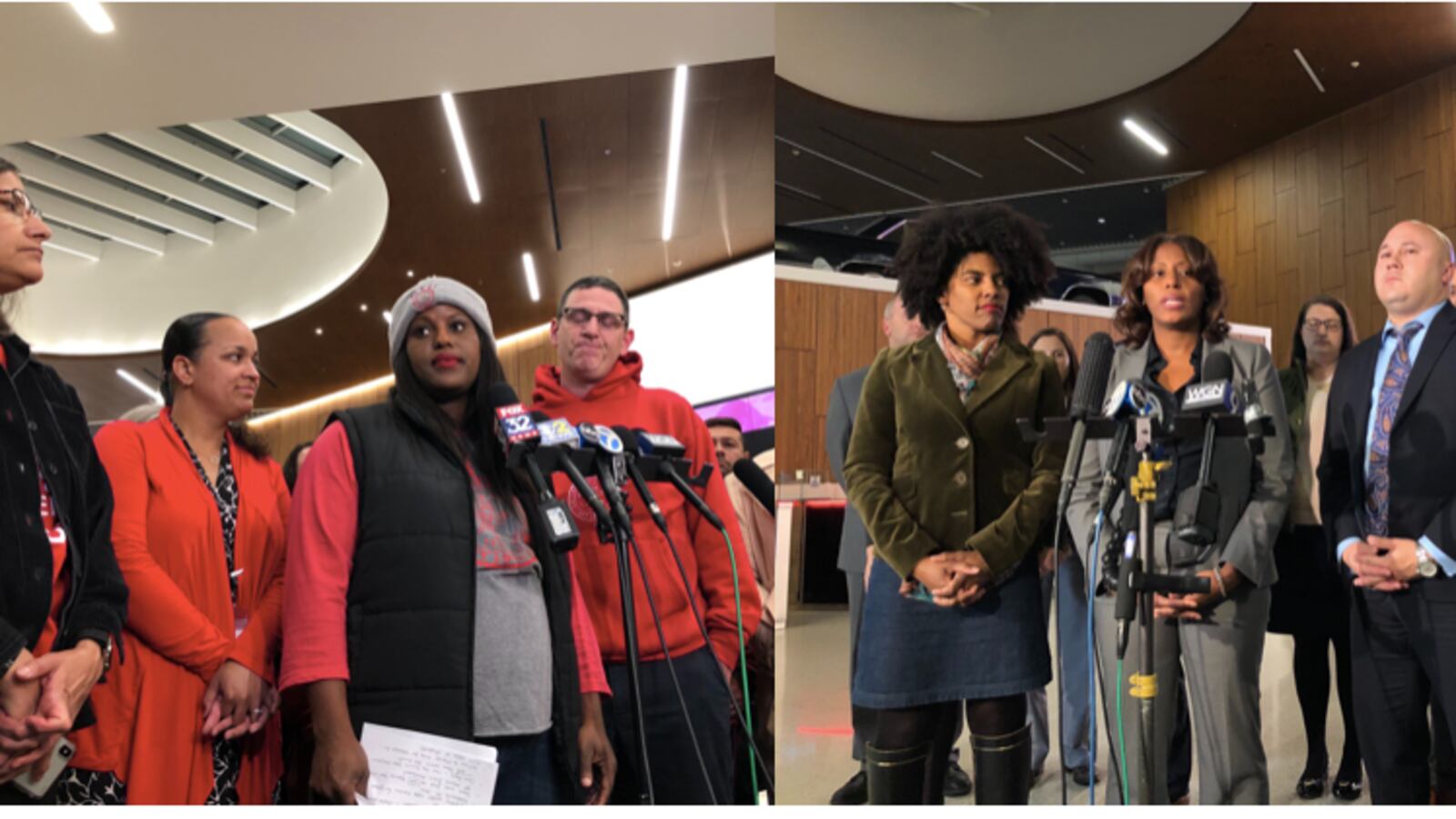Chicago’s teachers union contract still needs to be ratified, but now that an agreement exists, it’s fair to start assessing what teachers gained during their 11-day strike.
Chicago Teachers Union officials were somber Thursday as they announced an agreement for teachers to return to work. President Jesse Sharkey acknowledged that teachers didn’t get everything they had hoped for, even as he called the tentative agreement “a contract we can believe in.”
It’s clear that Chicago teachers are walking away with more than they had before the strike. But the city also ended the impasse having met its goal of limiting new spending to $500 million or less each year. Here’s what happened to the five big issues that the union said were the biggest sticking points in negotiations.
Support staffing: Union win
The city and union always agreed in principle that the city’s schools should have more nurses and social workers — but differed about how many details should be written into the contract. (That’s why the union’s hashtag the first week of the strike was #PutItInWriting.)
The tentative agreement spells out explicitly how many new support staffers will be hired each year and includes a city commitment to have one full-time nurse and social worker in each school by 2023. It’s unlikely that those commitments would have ended up in the contract without the strike.
The union scored additional staffing concessions after teachers walked out: agreements to at least try to hire staff members to support homeless students, restorative justice coordinators, and other specialists at the highest-need schools. That’s on top of other staffing wins that came well before the strike, including a promise from the city to employ school nurses directly, rather than hire them through contracts.
Class size: Compromise
One important union ask is in the contract: for the city to put resources behind reducing class size. The contract deal hands a significant pot of money to a joint union-district class size committee that has existed to review oversized classes and suggest remedies — from adding teachers aides to splitting classrooms where there is space. Now for the first time, the committee will be able to dole out city funds to make those changes happen: $35 million a year — $25 million more than the city had offered up before the strike.
What’s not in the deal: Lower class sizes. The union had pushed for lower class size caps, but it didn’t get them.
Prep time: Stalemate at best
The city and union started out far apart on the issue of teacher prep time, with the union proposing more time for elementary school educators to prepare each day and the city saying it actually wanted to reduce the amount of time those teachers had full autonomy to fill. The city dropped its request early on, but the union said this week that its prep time demand was one reason teachers were continuing their strike.
In the end, the only new prep time in the tentative agreement is for kindergarten teachers who have to administer a specific kind of assessment — and they are getting just two additional hours in the quarter when they have to give that test.
Some teachers aren’t happy that the union backed down, saying that the issue is core to communicating to teachers that their work is respected. “So many high school teachers are willing to stay out for elementary school prep time,” one member of the union’s bargaining team tweeted Wednesday night.
Contract length: City win
There’s no question here: The city got what it wanted. The union had been pressing for a three-year contract term, which is in line with the average contract length nationally. But the deal is for a five-year contract, which will give the city more time to fulfill its promises and, crucially, prevent another clash with the teachers union before Lightfoot is up for reelection.
Pay and benefits: Union win
The city had already put a lot on the table before the walkout — including a 16% raise over five years for teachers — and the union didn’t make pay and benefits a centerpiece of its public demands during it, either. But union negotiators extracted some further sweeteners while teachers were on strike, including an additional $5 million a year in pay for veteran teachers.
Many teachers wanted more for veterans, but there’s no question that the new contract includes across-the-board compensation boosts. (The city also agreed to bear most of rising health insurance costs and to increase sixfold the number of sick days that members can bank and use to extend leaves.)
It’s important to note that unions benefit from strikes in ways that go beyond the written pages of their contracts. Strikes allow them to galvanize members, draw public attention to their agenda, and demonstrate the power of organized labor.
That certainly happened this month in Chicago, where the families of 300,000 children were disrupted by the strike and rallies blocked traffic downtown on multiple occasions.
But there could also be downsides that aren’t captured in the agreement itself. Katharine Strunk, a Michigan State University professor who studies unions, pointed to what happened in Los Angeles after the teacher strike there early this year. A planned ballot measure to increase school funding was polling well before the strike, but when the vote took place in May, just 45% of voters supported it, not the two-thirds needed to force changes to local taxes.
Many factors likely contributed to the ballot measure’s failure, but Strunk said she suspects an important one is that voters heard striking teachers’ message loud and clear: The city did have enough money but had just allocated it to the wrong things.
Chicago’s strike could backfire in the same way, Strunk said. “I think there’s a real risk — not just for the short-term public sentiment for support of the union or city today, but for the long-term ability to raise public funding for a system that people believe is broken.”

